I don’t quite remember when Raja Deekshithar told me about the Tree, the Pond and the Stone. It was one of those things said in passing, casually. But with a certain emphasis. He told a sthala, sacred place, has to have a vriksha or tree, a tirtha or pond and a murti, an embodiment of god. These three together constitute what makes a sacred place, a sthala.
Sthala, a sacred place
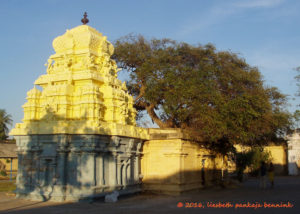
I thought about this from time to time. On the one hand it was kind of obvious. Every temple in South India has this combination of sacred things. Together they create the specific character and individual power of a temple.
The sthala vriksha or temple tree is the specific sacred tree of the temple. Each temple has one. With its own mythology, its own character and power. They are all in a way wish fulfilling trees. People will pray for certain things. Often of course having to do with fertility. But it can vary a great deal. The Ekamranatha temple in Kanchipuram has a mango tree as sthala-vriksha. In Chidambaram the Tillai, a kind of mangrove, is the sacred tree. The asvattha or pipul tree is always sacred. It was the tree under which Prince Gautama became Buddha.
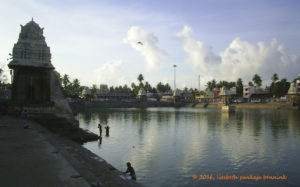
The tirtha, the sacred pond, is another feature found in every temple. Tirtha means passage, way, road, ford, crossing. In general a sacred place of pilgrimage, but specifically the holy pond of a temple. The same thing applies here. Temple ponds have their own name. Each temple pond has its own story how and why it came into existence, how its sacred power was uncovered. And what its specific power is. People will take a bath in the pond before worship. The sacred water makes pure. And the water is used for ritual, being pure and sacred always.
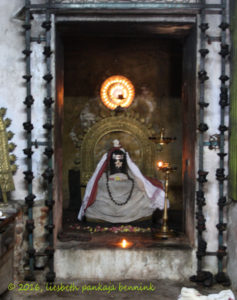
The third constituent of a sacred place is the murti. This is the embodiment of the divine. The solid, tangible or material form. The Sanskrit word murti derives from the verb-root murch, to settle into a fixed or solid form, assume definite shape or substance. But also to become strong, gather strength, acquire vehemence or power. In the case of Shiva temples this is the Linga, the abstract formless/form. In Vishnu temples one of the forms of Vishnu. The murti is almost always of granite. Sometimes it is said to be self-existent. To have come into existence by itself. Not crafted by human hand. Every murti has a myth attached. Telling how and why it came into existence. Or how it was found to be sacred and powerful.
Tree, Water and Stone
The Tree, Water and Form as the basis of what constitutes sacredness is a clear un-ambivalent concept. Somehow I kept thinking about it. I am always searching for the essence of things. Why these three? What does it mean? Something living, something flowing, and what about the form?
Sometimes the form, the Linga, is said to be self-existent (svayambhu). It means it is a stone in its natural form. Not crafted by human hand in any way. On the other hand the Shiva Linga is the Pillar of Cosmic Fire.
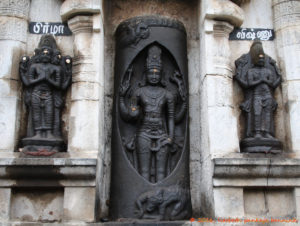
Once upon a time the gods Brahma and Vishnu quarrelled about the question which of them was the greater and most important. The Creator, Brahma. Or the Preserver, Vishnu. As their fight heated up a Pillar of Fire manifested between them and challenged them. “He who finds my root or my crown is the greatest between you both”. Brahma took the form of the swan, his vehicle, and started flying towards the top. Vishnu took his wild boar form, and started digging down. Both attempted for ages to reach their goal, the crown or the feet of the Cosmic Pillar of Fire, without any success. Eventually they were forced to give up. Then out of the great Flame Siva appeared. Shiva who transcends all the worlds and whose limits could not be perceived. Without beginning or end. And both Brahma and Vishnu had to surrender their ego.
Milky Way
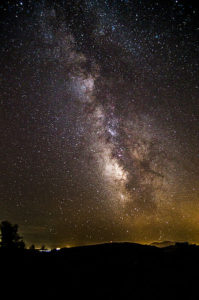
One day somehow the whole puzzle fell into place. What is the Column of Fire that has no beginning or end? It is the Milky Way. The band of stars of our galaxy seen as a column of fire stretching across the heavens from where we look at it.
I immediately also realised the identity of the Tree and the Pond. The asvattha, the sacred fig tree, ficus religiosa, is the ultimate sacred tree of the Veda. In the Katha Upanishad it is described as reaching majestically from Heaven to Earth, with its roots in Heaven and its branches down into the world. Its roots are eternal, unchanging. Its branches change with the cosmic cycles. The fruits on its branches are the stars. This too is an image for the Milky Way.
And the Water? Again another aspect of the sacredness of the Milky Way. As it is the great river of heaven. In the Vedas this is the Sarasvati. On earth thousands of years ago the majestic river flowing from the Himalaya to the sea. On its banks the Seers who gave form to the Veda used to live. As the Sarasvati disappeared because of climate change and geological movements it role was taken over by Ganga. The Milky Way is often called the Heavenly Sarasvati or the Akasha Ganga. It can be argued the Sarasvati on earth was named after the heavenly river, rather than the other way around.
So a sthala is the union of Murti, Tirtha and Vriksha. And these three represent Fire, Water and Spirit. It is the combination of Stone, Pond and Tree which creates sacredness because it represents the three spiritual aspects of the Milky Way in one.
Distant Connection
Although Bharata Natyam, Indian temple dance, and the Indian civilization, are in a way the essence of my heart and soul, I was born in The Netherlands. And this country, of which I am also very proud and fond, is in many ways far removed from India, its traditions, and spirituality. It has therefore been a great surprise to me to find the loud and clear echo’s of this ancient spiritual concept right here, in this cold and wet land. And not only found the echo’s, but even the actual key, reason and explanation to the concept.
The Netherlands is the edge of Europe, where the land gets ready to dive under the waves of the North Sea. The sea between England and Scandinavia. We have been struggling all the centuries to keep the little bit of Europe we consider ours from diving under the waves. Generally this land is wet, flat and soppy. Christianity has held sway here since the Middle Ages. And has done its best to wipe out all ancient knowledge and spirituality. But it is here that folklore is found that connects directly and deeply with the concept of the sacredness of the Stone, the Pond and the Tree as earthly reflections of the Milky Way.
 A Golden Key
A Golden Key
The Milky Way is has many identities in the ancient spiritual traditions, but it is first and foremost the Path of Souls. Finding the right path is the way ‘up’, to the roots of the sacred tree. This takes the soul to another, higher, destination. Travelling down, into the underworld, is the path to reincarnation and returns the soul to another cycle.
The hidden treasure, the key to the mystery, is buried at the feet of the ancient cosmic tree. Or in the bottom of the well, or under the sacred stone. Let me dig it up for you.
The stork is in all of Northern Europe the bird that brings the baby’s. But there are many variations on that tradition. Because often it is said the baby’s are found in a well. Sometimes it is the stork that goes and gets them. But it can also be the parents that have to go themselves to get the baby.
Sometimes it is told the baby’s are found hanging from a tree. Either the stork goes and gets them, or the parents have to go and ‘pluck’ the baby. In Amsterdam, across the water called the IJ, is a place called De Volewijck. It was still told till recently parents have to row across the water to find the baby hanging from the willows on the dike there. Baby’s would call out to them to be plucked.
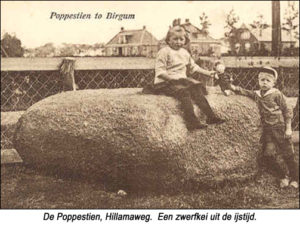 And then there are the baby stones. Now Holland is flat like a pancake, and we have no stone geology of our own. But the ice ages brought quite a few stones to the northern part, as far as the ice-sheets reached. So there we have the stories about the baby’s being found under a stone. Women would go to the stones and ask for a baby. One story is told of a couple that couldn’t get pregnant. One day they were visited by an mysterious couple. They received them with hospitality, and told them of their sadness. The couple advised them to fish out a big stone from the bottom of a nearby lake. And place it at a certain place and plant a circle of trees around it. They followed the instructions, found the stone, and brought it to the indicated place. Next thing they knew they got the baby they longed for. The stone used to lie on a low hill and was surrounded with trees in the village called Burgum. Women used to go an visit in the hope of getting pregnant.
And then there are the baby stones. Now Holland is flat like a pancake, and we have no stone geology of our own. But the ice ages brought quite a few stones to the northern part, as far as the ice-sheets reached. So there we have the stories about the baby’s being found under a stone. Women would go to the stones and ask for a baby. One story is told of a couple that couldn’t get pregnant. One day they were visited by an mysterious couple. They received them with hospitality, and told them of their sadness. The couple advised them to fish out a big stone from the bottom of a nearby lake. And place it at a certain place and plant a circle of trees around it. They followed the instructions, found the stone, and brought it to the indicated place. Next thing they knew they got the baby they longed for. The stone used to lie on a low hill and was surrounded with trees in the village called Burgum. Women used to go an visit in the hope of getting pregnant.
Cosmic Signpost
Even after these many centuries still the people in Northern Europe remember the essence of the sacredness of the Tree, the Water and the Stone. And their essential identity as representations and symbols of the Milky Way as the spiritual path souls have to take after death through the Underworld, on their way back to reincarnation. And I am just stunned how the folklore from my country of birth, being so far away from India, offers the golden key to unlock this treasure of knowledge and understanding from the Vedic civilisation. It is another proof for the spiritual unity of human civilisation everywhere. One day we all have to travel the sacred path of Water, Fire and Spirit to the destination of our soul. Directions for finding the right way have been left for us everywhere, if only we would care to take a look.
Thank you for visiting
Liesbeth Pankaja
PS you can find the blog by Abe de Verteller about the folklore on the origin of babies HERE. It is in Dutch, so you would need a translation machine to read it.
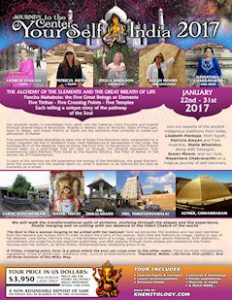 PPS You can still join us for a fabulous journey to five great sacred places in South India.
PPS You can still join us for a fabulous journey to five great sacred places in South India.
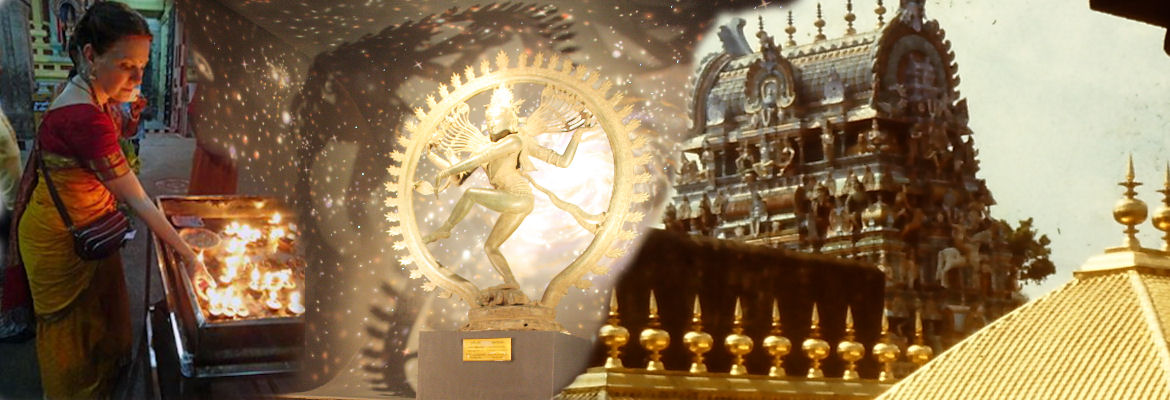
injamaven
Tree is also Axis Mundi, right? or Mt. Meru?
liesbethpankaja
Yes absolutely. Kathie. And the ladder we don’t want to walk under! And other things still. All weaving into a network of meaning.
Saurabh Saxena
The interesting point is how old is a temple tree which is now taken sacred? Did the temple come first or the tree, or both together?
I have read that for erecting a temple, a place nearby a water source, or a place on mountain or in a forest grove are taken as appropriate however we also see many temples which deviate from this principle. There arise a confusion here, was there a common thread which can bind all these different attributes of temples, was there a common guide which laid down the rules, or was it left to the designer and architect providing them a freedom around a loosely coupled periphery where they were free to think and design as per the needs of the hour?
We always think that there must be a though, a well-defined one, behind everything, specially if it is ancient or coming from our scriptures, and then we start thinking within this boundary, but what if there is no such thing? What if not every thing has a deep meaning, of course there are things having some hidden meaning but not all? Is our thinking already biased as out thought process is to find the hidden truth or meaning behind a tradition assuming that there is some hidden meaning? How will be the end, if we start questioning the very thought process? Let us start that there was no hidden meaning in the tree, water source etc. How many temples we have where there is no water source nearby? What if there is a water source, what was the practical need for which it was made or chosen? How many temples we have where there is no tree associated? And if there is a tree associated, which came first, the temple or the tree? Please do not take me in a wrong manner, it is a quest to find answers, if there is one. And if there is an answer then I am in quest of a right answer.
liesbethpankaja
You can find my reaction to Saurabh Saxena’s questions and reactions here https://www.chidambaramhiddentreasure.com/meaning/